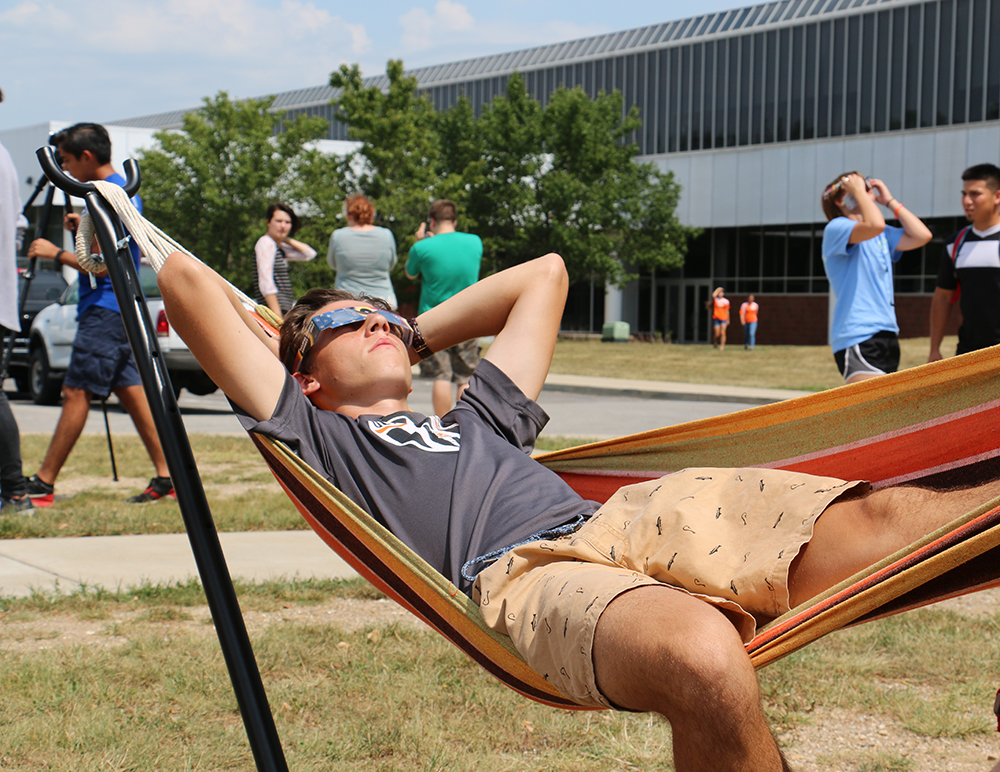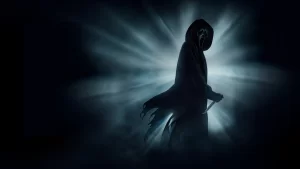Columbus East Hosts Solar Eclipse Party
August 21, 2017
Students donned with cardstock glasses flooded a grassy field behind the school after lunch, some relaxing on hammocks, eating homemade goodies or discussing astronomy with teachers and friends.
The occasion?
A rare total solar eclipse in almost 90 percent totality in Columbus.
Astronomers, teachers and families from across the United States waited almost 40 years for a total solar eclipse to occur in North America, and though the afternoon of August 21, 2017 was partly cloudy at Columbus East, students still appeared dazzled as the sun was reduced to a sliver through their eclipse glasses.
A solar eclipse occurs when the Earth, Sun and Moon align, with the Moon passing in between the Earth and Sun. Therefore, its shadow passes over Earth, creating darkness and greatly reducing visibility of the sun.
Columbus is not in the path of totality, where the Sun’s corona is visible, but the area still got significantly darker and students could see a crescent-shaped sun through their glasses.
Around 12:45 p.m., Steve Hambling’s Astronomy and Paleontology class began setting up next to the tennis courts, armed with lawn chairs and sun-themed desserts they had baked in preparation.
The students then proceeded to learn about the eclipse through a demonstration using a globe and styrofoam ball by Hambling, and prepared to view the moon passing over the sun by creating pinhole cameras and passing out glasses.
“This is just a pretty rare thing to have a solar eclipse, and it’s about 90 percent for us, so it’s not totality, but it’s close, so not to enjoy it would be kind of crazy,” Hambling said.
Fellow science teacher Derek Chastain had a filtered telescope available for students to safely view the sun through, and viewers could even observe darker sunspots through the lens.
Around 1:30 p.m., other students and faculty arrived, and the tennis court parking lot and adjacent field were flooded with those hoping to catch a glimpse of the eclipse. Clouds covered the sun during its most eclipsed moments around 2:20 p.m., but appeared satisfied nonetheless.
The next total North American solar eclipse will occur in 2024, and the path of totality will then pass over Columbus, Indiana.







